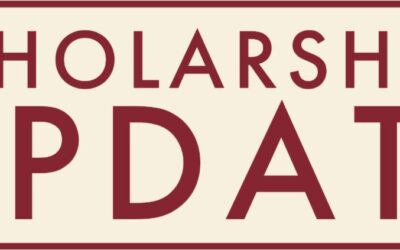In November I had the opportunity to attend my first professional gathering as the new President of the American Indian College Fund. Combined with my attendance at my first meeting of the Board of the Native Ways Federation during the annual National Congress of American Indian conference in October, this event helped me understand the importance of charitable standards of performance for organizations that are raising money in Indian country. Although I had always heard the College Fund Board and staff speak with great pride about their charity watchdog ratings, I hadn’t really understood what that means. What I learned about its meaning is important to every Native person throughout the country and to everyone who wants to share their good fortune with a worthy cause. Charity ratings are an excellent way to determine if your investment as a giver is going to the people you intend to help (You can check out the Fund’s ratings at the BBB, Charity Navigator, and Independent Charities of America).
There are literally thousands of organizations raising money throughout the United States and hundreds of them raise funds on behalf of American Indians. There is no doubt that a tremendous need exists in diverse social and geographic settings for resources to improve the health, education, and welfare of our people. High unemployment and limited access to healthy foods, health care, and even to education due to location and transportation issues combined with significant barriers to resources for our local and tribal governments creates a real need for non-profit organizations to remove those barriers and to bring resources directly to individuals and families.
Native people often don’t think of our national Indian organizations as charitable groups, yet they are. They are designated by the Internal Revenue Service as 501(c)(3) organizations, meaning contributions are tax deductible. They often choose to meet national charitable watchdog standards, particularly demonstrating how the funds they raise are distributed. They use a variety of strategies, ranging from workplace giving to significant grants and contributions from individuals, corporations, and foundations to raise money for direct support to tribal peoples.
Participation in a range of fundraising approaches and with watchdog organizations is a fact of life among reputable national Native charities.
Many charitable activities occur at the local, grassroots level in reservation, rural and urban Indian communities. With the rise of social media, more direct giving can be promoted through sites such as Facebook or with bloggers such as navajo on the Daily KOS. A strategy called crowdfunding is becoming increasingly popular among Native organizations, especially those involved in the arts and media and with youth programming. This approach allows an organization with financial needs to use the web to solicit individual gifts that are collected by the website and then disbursed to the organization. This is a very accessible opportunity for anyone and allows widespread participation especially among the younger population across the U.S. as their media access is a tool to build their philanthropic support.
In American Indian communities across the country, winter should be a time of rest and story- telling, a time of gathering and celebrating the well-being of our families. Instead it is often a time of great hardship and anxiety. The lack of resources to provide adequate heat, food, and health care really shows during the winter. In our past, we prepared for winter throughout the spring, summer and fall seasons. I think of giving to our Native charitable organizations as a way of preparing our people for the winter. We need education, housing, health care, protection of land and resources, and economic development to take care of ourselves when the harshest times arrive.
We also need to be accountable as organizations that raise funds on behalf of our people. Not all of us have the ability to participate with watchdog organizations such as Charity Navigator or the Better Business Bureau Wise Giving program, but national Native charities certainly should. Donors should be assured that their giving benefits our people and watchdog agencies are one very public, very accessible way to evaluate that assurance. For local and regional groups, especially our grassroots fundraisers, the due diligence of donors can be more direct – donors can see the results through the use of grassroots social media, phone calls, photos and can even visit for themselves.
Education, especially an education at a tribal college or university, is one of the most effective ways to overcome poverty and a lack of access to resources both at the family and community level. The American Indian College Fund (aicf.nmcstaging.com) provides vital scholarships to American Indian students. These students achieve their dreams of a college education and become even more engaged as tribal and American citizens.
Many national Indian organizations are part of the Native Ways Federation (www.nativeways.org), providing support to a range of important issues for American Indians including child welfare, legal resources, and health and wellness.
Give generously and often to Native organizations, locally and nationally. Your gift of your resources and your time are welcome and, if you use charity watchdog ratings as a guide, you can be assured that your gift is going to the people you intend to support. Pilamaya, thank you.






